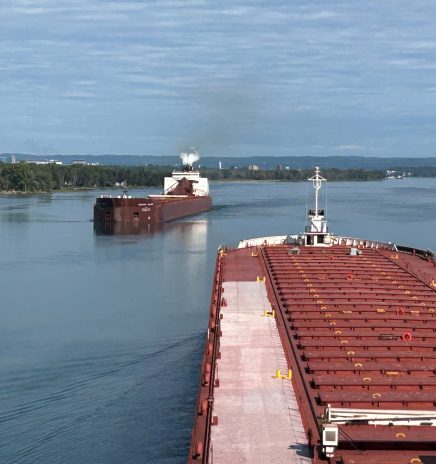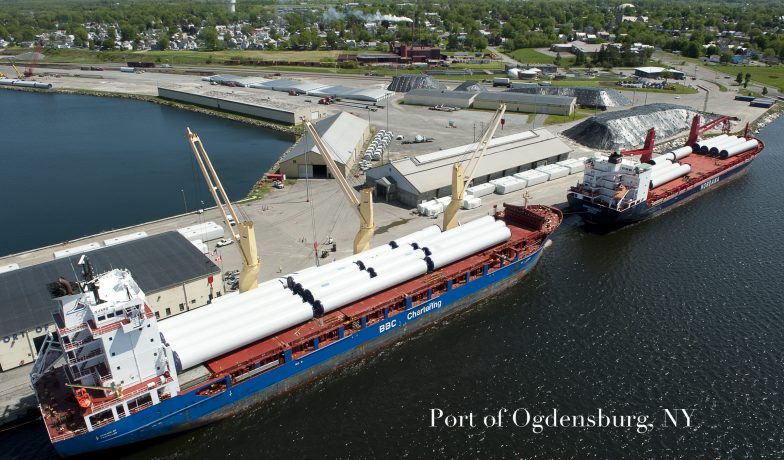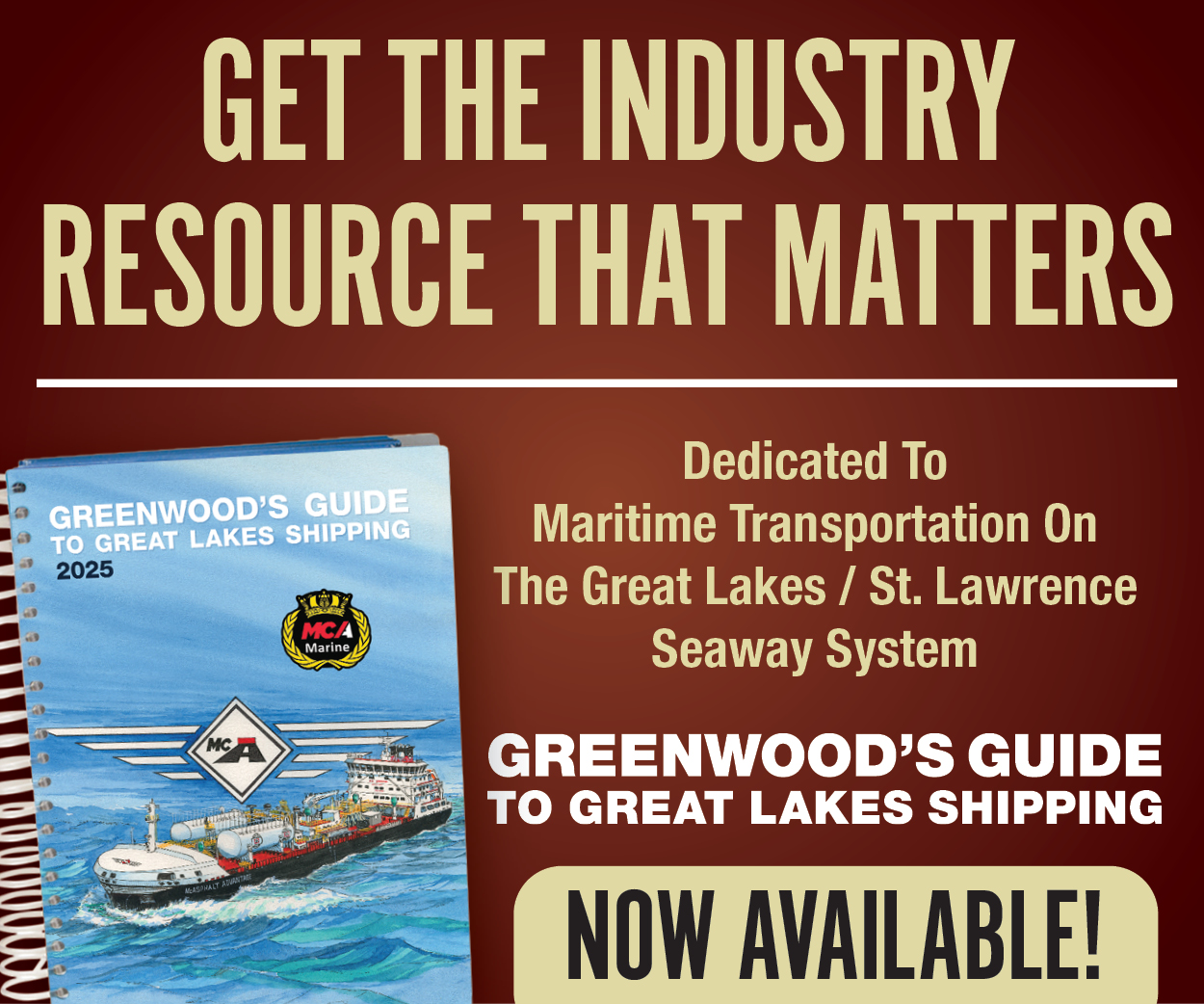Great Lakes Stakeholders Closely Monitoring U.S. and Canadian Tariffs
Evolving Tariff Issues
It was in January when President Donald J. Trump raised the issue of international tariffs. On February 1, the President announced new tariffs on Canada and Mexico, a measure that he said would help stop the “extraordinary threat posed by illegal aliens and drugs.” Canadian imports faced a 25 percent tariff, with a lower 10 percent tariff on Canadian energy. In the February 1 directive, as one basis for his move, the President cited the need to place pressure on Mexican and Canadian cartel and drug activities.
Since then, trade-tariff issues have continued. On March 4, Canada imposed a reciprocal 25 percent tariff on a list of 1,256 U.S. imports. On March 12, the United States imposed 25 percent tariffs on imported steel and aluminum. On April 2, reciprocal tariffs on imports from all countries went into effect. Just a week later, on April 9, President Trump issued a 90-day pause on all reciprocal tariffs except for China, where tariffs were increased to 125 percent. On April 3, a 25 percent tariff on all auto imports to the United States went into effect. Canada responded with a reciprocal tariff on all vehicles imported from the United States. During this time, the BBC reported that Canadian Prime Minister Mark Carney commented that Canada’s old relationship with the United States, “is over.”
Undoubtedly, this isn’t over. But unsettled ground still has impacts. Now, Great Lakes businesses – in Canada and the United States – are closely watching a once familiar landscape and asking: do we need to approach our friends with caution?
At the end of February, the investment firm Goldman Sachs published a white paper titled “Top of Mind: Trump Tariffs: Mostly Talk, or Big Action?” The paper includes an interview with trade expert Jeff Gerrish, a former Deputy U.S. Trade Representative in the first Trump administration, and currently a partner with Schagrin Associates.
While Gerrish’s comments preceded the President’s April 2 announcement that the United States will impose a 10 percent tariff on imports from all countries, they are still insightful. Gerrish noted, for example, that tariffs are used for the first-time to thwart border security and fentanyl trafficking, that’s outside a more traditional use in trade and economic policies.
Gerrish commented that “the idea that Trump is shooting from the hip on trade and tariff policy is a misperception. (He) has a plan and a strategy to achieve his goals.” He said it’s unclear what Canada and Mexico will need to do to avoid tariffs. Anticipating the April announcements, Gerrish said that “everyone needs to buckle up, because the President is just getting started and what lies ahead will likely be even more unpredictable than during his first term.” He concluded: “I wouldn’t expect an end to uncertainty anytime soon.”
Impact on the Great Lakes
Both Canadian and U.S. stakeholders invested in maritime and trade on the Great Lakes are keeping an eye on business and any early impacts of the tariffs. The Chamber of Marine Commerce (CMC), based in Ottawa, Canada, represents a range of U.S. and Canadian maritime industries, including ship owners, cargo shippers and ports and terminals. Bruce Burrows, president and CEO of CMC, said he and his team are working on the frontlines of this burgeoning set of issues. He questioned whether the political dust would settle or if this is the new normal. He noted Canadian Prime Minister Carney’s statement that the United States is no longer a “reliable partner.” This changed backdrop, Burrows said, will require the maritime industry to revisit investment plans and current and future business relationships. He added that priorities on internal trade will influence future business development.

For many U.S. and Canadian ports, 2024 was a record-breaking year. On April 9, the St. Lawrence Seaway Management Corporation (SLSMC) and the Great Lakes St. Lawrence Seaway Development Corporation (GLS), released its 2024 navigation season traffic report. Now, as the 2025 season starts, Burrows commented on the indicators he is watching for, given the constant demands and counter-demands within the tariff debate. First, Burrows noted that shipping on the Great Lakes-St. Lawrence Seaway has been one of the most reliable, efficient and predictable links in the global supply chain. But he said that this stability is being undermined by the daily occurrence of new demands and changes to trade relations. Tariffs, he said, can only be expected to throw cold water on trade activity.
Burrows highlighted critical statistics, noting that activities on the Great Lakes-St. Lawrence Seaway support the North American economy.
- Approximately 360,000 jobs across North America
- Approximately $51 billion USD in economic activity
- The movement of approximately $121 billion USD in cargo value
Another urgent concern for the CMC is the proposal, by the U.S. Trade Representative, to charge fees of up to $1.5 million per port call for Chinese-built vessels entering U.S. ports. Burrows said he understands the motivation – to supercharge the buildup of American shipbuilding capabilities. But until that new capacity is ready, the new fees, plus new tariffs, will harm North America’s supply chain and U.S.-based businesses. The CMC requested the Trade Representative to add language that would protect domestic inland and coastal shipping to “avoid any unintended consequences.”
“All of this” Burrows commented, “will be put at risk by policy decisions that are detrimental to the supply chains and trade relationships that North Americans depend on.” New uncertainties, Burrows said, are upending prior assumptions about how cross border trade is conducted. This instability, he added, “is putting industry in a defensive stance, making future investments harder to contemplate.”
Desire for Stability
The National Association of Waterfront Employers (NAWE) is a Washington, D.C.-based trade association whose members, including Great Lakes companies, are privately owned stevedores, marine terminal operators and other waterfront related employers. NAWE’s core focus areas include ensuring stable trade flows, maintaining efficient cross-border infrastructure, and U.S. policies that support the competitiveness of U.S. marine terminal operators and stevedores.
John Young took over as NAWE’s vice president of government affairs in March. Young said the current disputes foster instability and uncertainty. “With Canada being such a close neighbor and ally,” Young said, “it is critical that the tariff and trade policy between our countries be stable for the long-term and prioritize an efficient supply chain.” The NAWE team is monitoring tariff adjustments and regulatory shifts impacting the maritime industry and supply chain, as well as trade volumes.

Young said the U.S. tariffs on Canadian aluminum and steel could disrupt established trade patterns on the Great Lakes, increase manufacturing costs and reduce Great Lakes cargo volumes. Tariffs might protect some industries, he noted, but NAWE seeks trade policies that do not intentionally harm port efficiency, terminal operators or supply chain stability.
As the 2025 shipping season starts, Young said most port operators anticipate strong demand, supported by continued investments in terminal infrastructure and growth in bulk commodities, containerized cargo and project cargo. But the new trade-tariff controversies, he said, are impacting this otherwise optimistic sentiment.
Young highlighted NAWE’s 2025 top legislative and regulatory priorities.
- Advocating for federal infrastructure investments to modernize U.S. marine terminals
- Supporting workforce development initiatives, including training for longshore workers
- Engaging with policymakers on port security, cybersecurity and supply chain resilience following Coast Guard and CISA cybersecurity regulations
- Addressing environmental regulations affecting port operations, including emissions reduction mandates
- Evaluating fees on foreign vessels coming into the United States
In the Great Lakes, specific concerns include dredging and maintaining navigable waterways, enhancing multimodal connectivity, and ensuring regulatory consistency between U.S. and Canadian authorities.
Prioritizing Business Relations
The Ogdensburg Bridge and Port Authority (OBPA) in Ogdensburg, New York, handles several transportation, infrastructure and economic development related assignments, including the Port of Ogdensburg, located in the state’s “North Country.” The port is the first U.S. port on the St. Lawrence Seaway and the northern-most port in the state of New York. The port is among the closest American terminals to Northern Europe, making it economical for imports and exports.
U.S.-Canadian business relations are a priority. Port officials have assisted numerous Canadian and American firms with North Country siting and expansion projects. Plus, the port authority operates two industrial parks that have drawn various U.S. and Canadian businesses to the region.
Steve Lawrence, OBPA’s executive director, said that trade tensions between the U.S. and Canada remain a critical issue. He noted that the two countries have strong economic incentives to resolve disputes, but ongoing tariff uncertainties present planning and investment challenges.
“Our business relies heavily on Canadian imports, particularly bulk commodities like road salt, grain and fertilizer,” Lawrence said. “Any new tariffs or restrictions could have a direct impact on our volumes and competitiveness. We are advocating for policies that support cross-border commerce and especially predictability.”
He added that the port has not yet seen direct tariff consequences. However, he noted that it is too soon to assess the full picture of tariff impacts.
Lawrence also said that 2024 was a strong year for Great Lakes ports. “We’re hopeful that momentum will continue in 2025,” he said, adding that demand for key commodities, U.S.-Canadian economic conditions and infrastructure improvements should contribute to continued success. But there are headwinds, he added, noting the tariffs as well as slowdowns in global shipping trends, such as wind energy components, could impact overall tonnage.

Great Lakes Iron Ore and Limestone Trade Down in October
The Lake Carriers’ Association reports shipments of iron ore on the Great Lakes totaled 4.4 million tons in October, a decrease of 1.3% compared to 2024. Shipments were 8% below... Read More

Great Lakes Limestone and Iron Ore Trade Down in September
Shipments of limestone on the Great Lakes totaled 3.3 million tons in September, a decrease of 11.5% compared to 2024, according to the Lake Carriers’ Association. Limestone cargos were also... Read More



